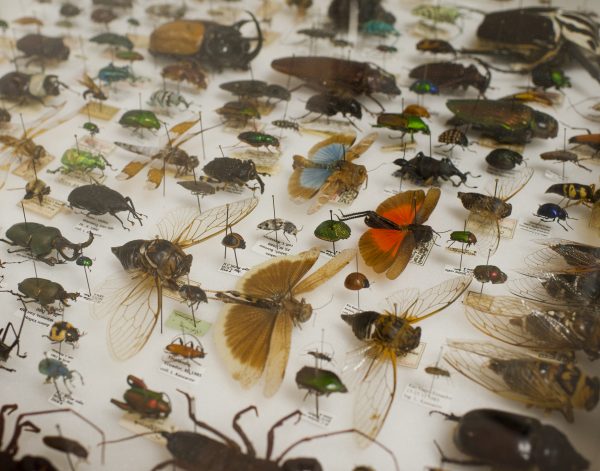Insects were deaf when they first appeared about 400 million years ago most insects remain deaf but have evolved other hearing means like ears on antennae abdomens forelegs and wings

Insects’ Evolutionary Journey: From Deafness to Hearing Marvels

Insects, the humble beings that make up a significant proportion of Earth’s biodiversity, have evolved remarkably over the past 400 million years. One of the most fascinating aspects of their evolution is how they gained the ability to perceive sound. Initially, insects were deaf, but through the relentless force of natural selection, they adapted and developed various means of hearing, utilizing antennae, abdomens, forelegs, and even wings.
The question arises: How exactly do these small creatures detect auditory signals within their environment? To delve into this intriguing phenomenon, let’s explore the various modifications insects have acquired to hear the sounds of the world around them.
A World Without Sound
For millions of years, insects roamed the Earth in a silent realm, devoid of auditory perception. However, as time passed and the environment became richer with life, new selective pressures arose. Insects faced challenges that required them to gather information about their surroundings more efficiently, such as detecting predators, finding mates, and locating resources. Thus, the evolution of hearing capabilities commenced.
The Acoustic Transition

While insects may not have ears as humans do, they have developed an array of astonishing adaptations to sense sound. These adaptations have evolved independently across various insect lineages, resulting in a diverse range of hearing organs. By utilizing different body parts, insects can efficiently capture sound waves and interpret them.
1. Ears on Antennae: Some insects, such as mosquitoes and moths, have evolved ears on their antennae. These specialized sensory structures, known as Johnston’s organs, consist of thousands of sensory cells that convert sound vibrations into electrical signals. This adaptation allows these insects to detect frequencies that are vital for their survival, enabling them to navigate their complex acoustic environments.
2. Abdominal Hearing: Other insects have developed auditory organs on their abdomens, such as crickets and grasshoppers. These structures, called tympanal organs, consist of thin membranes that vibrate in response to sound waves. As the membrane vibrates, specialized neurons detect these oscillations and transmit the information to the insect’s brain. This adaptation has proven crucial for species-specific communication, where males produce distinctive calls to attract females during courtship rituals.
3. Foreleg Hearing: Insects like katydids and bushcrickets possess unique adaptations by having hearing organs on their forelegs. These organs, called crista acustica, contain sensitive hairs that detect slight vibrations caused by sound waves. This enables these insects to detect a wide range of frequencies and precisely locate the source of a sound.
4. Wing Hearing: One of the most astonishing evolutionary developments is the evolution of hearing organs on insect wings. Insects like some crickets and lacewings have specialized structures on their wings that detect sounds through tiny sensory hairs. When sound waves interact with these hairs, they initiate mechanical movements, stimulating sensory cells. This intricate adaptation allows these insects to detect not only airborne sounds but also the vibrations transmitted through plant stems and leaves.
The Beauty of Evolutionary Adaptation
The journey from deafness to the marvels of insect hearing demonstrates nature’s incredible ability to mold and refine organisms over unimaginable timescales. Through countless generations, insects have acquired an impressive array of hearing mechanisms, each tailored to their unique lifestyles.
The evolutionary adaptations that allow insects to perceive sound have had profound impacts on their survival and success as a species. By adding a sonic dimension to their perception of the world, insects have tapped into a whole new realm of communication, navigation, and survival strategies. It is truly a testament to the power of evolution.
Related Posts
Quick Links
Legal Stuff

